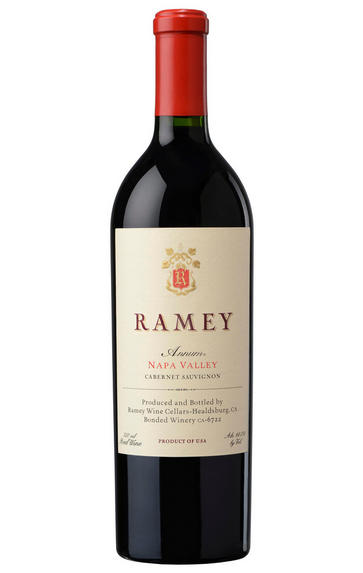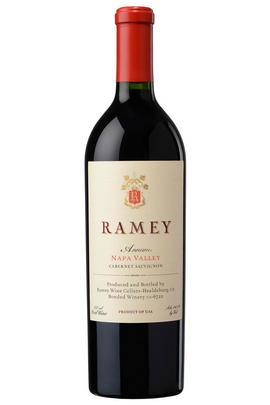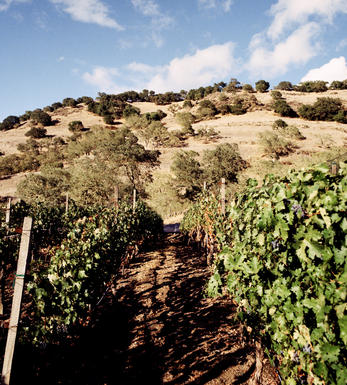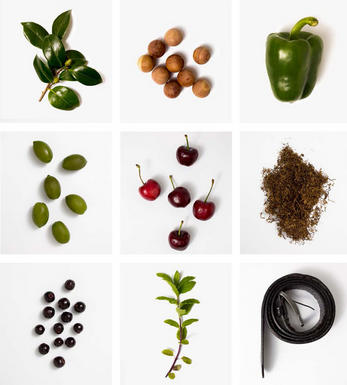
2008 Ramey, Annum, Napa Valley, California, USA

Critics reviews
(Robert M. Parker, The Wine Advocate December 2010, Issue 192)
(Robert M. Parker, The Wine Advocate December 2010, Issue 192)
(Stephen Tanzer’s International Wine Cellar May/June 2011)
The third vintage of this blend, which represents our version of a “winemaker’s wine.” Having spent so much time working in Bordeaux and visiting Burgundy, the Loire and the Rhone, I’m deeply steeped in French winemaking tradition, including their orientation toward the growing site or region. Thus, all our wines are either vineyard designates or regional blends. While Annum is an appellation wine, it is the one blend we make each year that allows us to select from a range of vineyards to make the best blend possible that vintage.
This third release is composed of 95% Cabernet Sauvignon from the J. Davies Vineyard on Diamond Mountain and 5% Petit Verdot from our Pedregal Vineyard in Oakville. While we try not to use too much new oak, the density of this wine allowed it to spend 26 months in all new barrels, after which it was bottled without filtration. As with all of our wines, this was fermented with native yeasts and bacteria. Only 440 cases produced.
(David Ramey, Winemaker)
About this WINE

Ramey Wine Cellars
David Ramey built his reputation at such luminary wineries as Matanzas Creek and Dominus before he and his wife Carla established Ramey Wine Cellars in 1996.
From his earliest experiences in wine, David has been inspired by European styles. Having worked in France at Château Pétrus, he dedicated himself to applying the old-world techniques he absorbed to the perfectly ripe fruit of Napa and Sonoma. At a time when technical winemaking, straight out of the textbook, was the norm in California this made David something of a pioneer on the west coast. He remains one of the most influential winemakers in North America.
David and his wife Carla started small, their first two wines were Chardonnays from the Hyde and Hudson vineyards. To tell the story of their terroir David vinified each in the same fashion, leaving only the quality of the fruit to express the personality of the vineyards. This is a practice continued today across the range of Chardonnays.
In common with most Californian wineries, the majority of grapes are bought in rather than from estate-owned vines. David’s deep understanding of the region and its vineyards have ensured that he only works with great vineyards farmed by great people. His long-standing relationships allowing for a collaborative approach to get the best quality from each site and exemplify their character.
Chardonnay and Cabernet Sauvignon play the leading roles at Ramey, with most of the Chardonnay coming from the cool Sonoma where proximity to the coast gives more exposure to the morning fogs. The Cabernet is all classic Napa. A Sonoma Syrah was added in 2004 and they have subsequently diversified the range with parcels of Merlot, Cabernet Franc and Pinot Noir which David could not resist trying his hand at.
David believes that better farming is the key to California’s continued and growing success. They manage vineyards they lease themselves using organic methods and work hand in hand with their growers to promote sustainable and low intervention methods.
In the winery David’s approach is recognisably Burgundian. Grapes are pressed without crushing to avoid skin contact. Alcoholic fermentation takes place in barrel followed by aging on fine lees and battonage. Malolactic fermentation is allowed to happen. David’s view is that the answer to flabby over-oaked Chardonnay’s once popular with the critics is not to go 180° but to take a balanced approach. This is precisely what he has always done – making wines for critics has never been part of the mantra.

Napa Valley
North Coast's Napa Valley is California's most famous viticultural area (AVA), claiming some of the most expensive agricultural land in the world and producing wines of ‘cult’ status.
Its 16,000 ha of vines lie over a strip (40 miles long-5 miles wide) of diverse soils (clay, gravely, volcanic), with its northernmost end on the side of Mountain Helena and its foot in San Francisco Bay. The valley is framed by two mountains ranges Vaca (to the north) and Mayacamas (to the south), yet the main climatic influence is the cool wind and fog that is sucked in from San Pablo Bay during the afternoon, allowing grapes to ripen slowly and evenly.
The area enjoys a variety of unique microclimates, as temperatures can vary dramatically as much as 15 degrees, from the north to the south end of the valley. These differences have led to the creation of several sub-AVAs (14 in total) including:
Atlas Peak, Chiles Valley District, Diamond Mountain District, Howell Mountain, Los Carneros, Mt. Veeder, Oakville, Rutherford, St. Helena, Spring Mountain District, Stags Leap District, Yountville, Wild Horse Valley and Oak Knoll District. The Calistoga AVA is still pending approval.
Both the “Napa Valley” designation and the sub-AVA name must appear on the wine label simultaneously, with the exception of wines from the Carneros AVA, which is shared between the Napa Valley and the Sonoma County.
Cabernet Sauvignon is the undisputed king of Napa grapes, occupying over 45% of the vineyard acreage, followed by (predominantly) Chardonnay, Sauvignon Blanc, Chenin Blanc, Riesling, Zinfandel, Merlot, Cab. Franc and to a lesser extent Petite Sirah, Sangiovese, Barbera, Dolcetto.
Recommended Producers
Frog's Leap, Dominus, David Ramey, Viader, Stag's Leap Cellars, Paras Vineyards, Heitz.

Cabernet Sauvignon
The most famous red wine grape in the world and one of the most widely planted.
It is adaptable to a wide range of soils, although it performs particularly well on well-drained, low-fertile soils. It has small, dusty, black-blue berries with thick skins that produce deeply coloured, full-bodied wines with notable tannins. Its spiritual home is the Médoc and Graves regions of Bordeaux where it thrives on the well-drained gravel-rich soils producing tannic wines with piercing blackcurrant fruits that develop complex cedarwood and cigar box nuances when fully mature.
The grape is widely planted in California where Cabernet Sauvignon based wines are distinguished by their rich mixture of cassis, mint, eucalyptus and vanilla oak. It is planted across Australia and with particular success in Coonawarra where it is suited to the famed Terra Rossa soil. In Italy barrique aged Cabernet Sauvignon is a key component in Super Tuscans such as Tignanello and Sassicaia, either on its own or as part of a blend with Sangiovese.


Buying options
Add to wishlist
Description
The 2008 Cabernet Sauvignon Annum also improved dramatically from last year. Deep, sweet black currant, blackberry, camphor, truffle and graphite aromas jump from the glass of this full-bodied effort. With additional texture and layers as well as a sweet inner core of tannin backed up by extraordinary fruit, depth and glycerin, it should drink well for 15-20 years.
(Robert M. Parker, The Wine Advocate December 2010, Issue 192)
wine at a glance
Delivery and quality guarantee